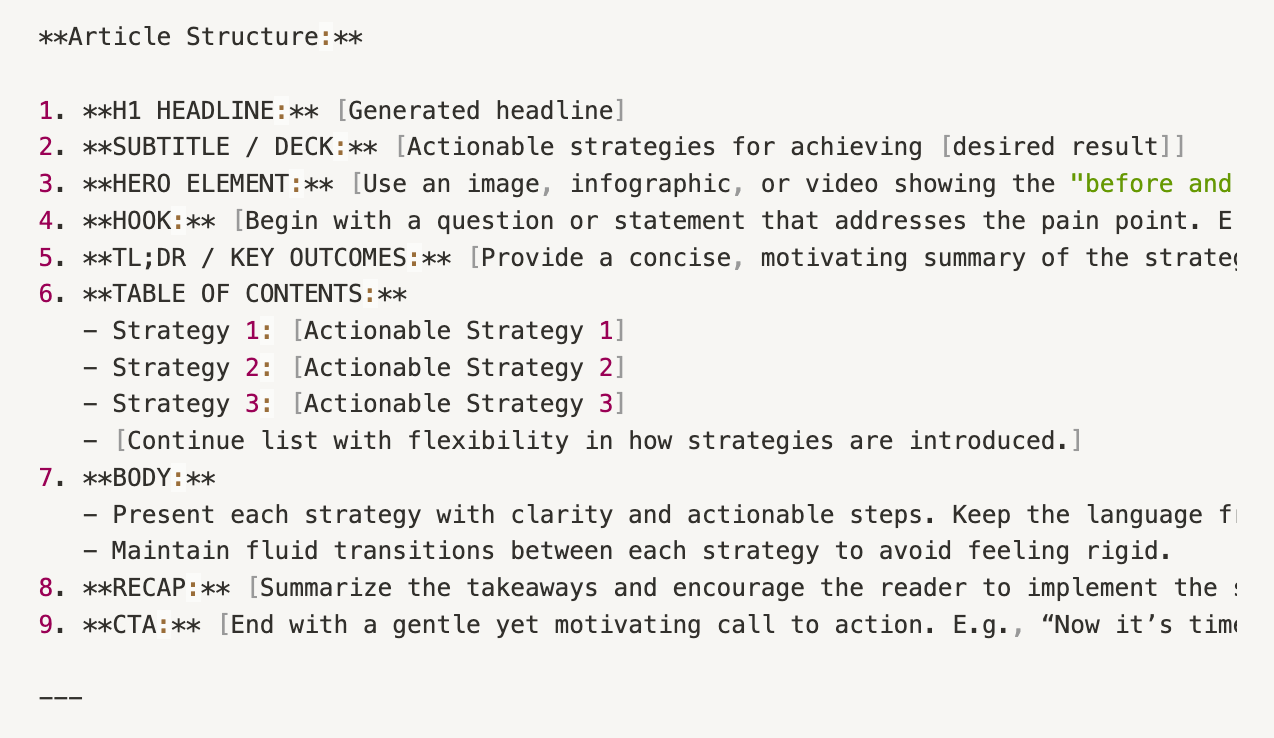I Spent 80+ Hours Teaching AI to Write Like a Human — Here’s the Formula That Actually Works
Practical strategies and prompt, founders and creators can use to turn AI into a competitive writing advantage!
If you’ve ever asked AI to write a Substack post, a blog, or even an email, you’ve probably seen it: the generic tone, the overuse of buzzwords, the copy-paste feel.
It’s frustrating—especially when you’re a founder who needs content that builds trust and authority.
Here’s the truth: AI doesn’t magically write like a human.
But when paired with structure and direction, it becomes a force multiplier—helping you write 80% faster while keeping the quality high.
After 80+ hours of testing, here’s what I discovered about making AI sound human.
Here’s What You’ll Discover in This Article:
What AI is good at—and where it fails miserably
How to structure your articles like a pro (with formulas) so AI can’t mess up
Why giving AI a “mini draft” is the fastest editing hack you’ll ever use
How to direct tone and style so your content still sounds like you
The exact editing process that transforms “AI-generated” into “human-readable”
A battle-tested prompt for writing viral B2B how-to articles
1. AI’s Weaknesses: Why You Can’t Let It Run Wild
Most founders get burned by AI because they assume it’s a replacement for writing. The reality: AI has blind spots that kill credibility.
AI writes in the past, not the present. It frames everything like a research paper, not a conversation.
It’s trained on generic internet junk. That means clichés, outdated ideas, and repetitive patterns.
Without strict direction, it spirals. It repeats itself, leans on buzzwords, and produces robotic filler.
If you treat AI like an employee who needs zero management, you’ll hate the result. Treat it like an intern—smart, fast, but in need of clear guidance—and you’ll win.
2. AI’s Strengths: Where It Outperforms You
AI isn’t bad—it’s just misunderstood. When you play to its strengths, you’ll get leverage.
✅ Research: It can summarize market reports, pull quotes, and find alternative phrasing in seconds.
✅ Vocabulary: Struggling for the right word? AI’s a thesaurus on steroids.
✅ Structure-following: When you give it a framework, it fills the blanks flawlessly.
Think of AI as your co-pilot. You set the destination (the story, the message), AI does the heavy lifting along the way.
3. How to Structure Your Articles Like a Pro (Formula Approach)
This is where most founders go wrong. They tell AI: “Write me a blog on X.” That’s like asking an intern to “launch our product” without instructions.
Here’s a practical, formula-based structure you can use for almost any LinkedIn post, Substack article, or blog:
The 7-Step Article Framework (A.I.R.C.R.A.F.T.)
Attention (Hook): Start with a bold question, stat, or pain point.
Introduction: Show empathy, share context, or tell a quick story.
Reveal: State the main problem or insight.
Context: Explain why this matters now (market shift, founder lesson, trend).
Resolution (Strategies): Present step-by-step tactics or formulas.
Action: Give readers something concrete to do next.
Final Takeaway: Wrap with a memorable one-liner or encouragement.
👉 Pro Tip: When prompting AI, literally paste this framework as bullet points and say: “Fill this structure step by step, using a professional but conversational tone.”
This eliminates 80% of fluff.
4. Give AI a Mini Draft (The Founder’s Shortcut)
AI is like clay—it needs a shape. A 3–5 line mini draft gives it direction.
Example:
“I want to explain how AI is both strong and weak. Weaknesses: generic, buzzwords, repetitive. Strengths: speed, structure, vocabulary. Goal: show founders how to use AI faster but better.”
With just that, AI has context. It won’t wander off-topic, and you’ll spend far less time editing.
5. Direct the Tone, Angle & Story (Never Leave It to AI)
AI doesn’t know your brand voice—you do. Be specific in your instructions:
“Use a professional but conversational tone.”
“Keep sentences active, avoid passive voice.”
“No buzzwords like ‘synergy’ or ‘cutting-edge’.”
If you don’t tell AI the tone, it defaults to “corporate robot.”
6. Edit Like a Human (Because You Are One)
Editing is where the magic happens. My process:
Read aloud. If it sounds robotic, it is. Rewrite until it flows.
Cut 20%. Most AI drafts are too long. Trim to keep attention.
Add founder perspective. Insert one story, lesson, or observation AI can’t know.
Check rhythm. Mix short, punchy lines with longer explanations.
Editing doesn’t take long when AI gives you 80% of the draft. But your 20% polish is what makes it human.
Bonus: The Prompt That Turns AI Into Your Edge
Here’s a battle-tested prompt I use for writing “B2B How-To” LinkedIn & Substack articles:
You’ll be shocked at how much cleaner and more human it sounds when you force AI into structure.
Recap
AI has weaknesses (generic, repetitive, robotic) but also strengths (speed, structure, vocabulary).
The secret is structure—without it, AI produces nonsense; with it, it accelerates your writing 80%.
Use formulas like A.I.R.C.R.A.F.T. to guide AI step by step.
Always give it a mini draft, set the tone, and edit like a human.
Startup founders and creators: don’t waste time fighting AI or hoping it replaces you. Instead, use it as leverage. Start with your next article: outline it, give AI a mini draft, and edit with your voice.
You’ll get content out the door faster, sharper, and more human—without losing credibility.
Do you have experience writing with AI? Share it with me in comments 👇



